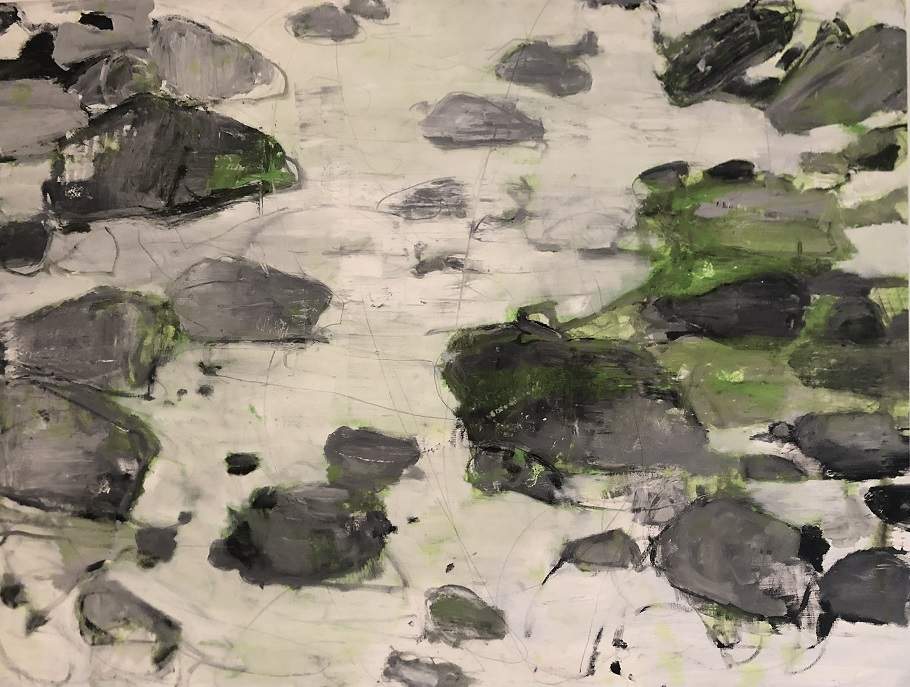In Bagheria a solo exhibition of Giovanni Frangi with natures and landscapes
From July 29 to Sept. 30, 2022, the Sala dell’Edicola of Villa Cattolica - Museo Renato Guttuso in Bagheria (Palermo), as part of the “Visual Arts” section of the Animaphix - International Animated Film Festival, will host Urpflanze, a solo exhibition by Giovanni Frangi (Milan, 1959): the show will officially open the eighth edition of the event dedicated to authorial animation cinema.
Conceived as a project room, the exhibition revives an ancient interest of Frangi’s, that of landscape and nature, a theme that the artist has been investigating since his early days and with which he took part in the Venice Biennale in 1999, creating the curtain for Anton ÄŒechov’s play Uncle Vanya, directed by Federico Tiezzi, in which those wooded atmospheres that would later become the fixed point of his entire production were already evoked.
The core group of works on display consists of canvases in large-format oil paint (measuring 195 x 146 cm), including Ansedonia (2018), and medium-format works (measuring 98 x 130 cm) such as Urpflanze Tambac (2022) and Urpflanze Makana III (2022), bordering between the figurative and the abstract; to which are added works on paper (60 x 50 cm), made with oil pastels, pencil and aniline, such as Urpflanze Balma I (2022), Urpflanze Balma II (2022) and Urpflanze Colma II (2022).
Right from the title of the exhibition(Urpflanze in German means “primordial plant”), the concept of the original plant elaborated two centuries ago by Johann Wolfgang von Goethe is mentioned: where the German writer sought the primordial element, the structure from which the variety of the world originates, the artist seeks a few elements, infinitely duplicable, from which the thousand expressive possibilities of painting spring. “The explicit reference to Goethe and his botanical studies,” suggests writer Maurizio Padovano in his text dedicated to the exhibition, “show that we are far beyond any landscape discourse. What places are those in Frangi’s painting? They are places in which, despite the absence of the word, one bets on the permanence of the logos. Places that tell of the only possible resistance: that of a return to a vision of nature as a sustainable Time in which what appears fleeting to us, in the laughable brevity of our existences, instead somehow persists and lasts.”
Giovanni Frangi was born in Milan in 1959. He studied at the Brera Academy of Fine Arts and made his debut in 1983 at “La Bussola” gallery in Turin. From 1986 the exhibition at Galleria Bergamini in Milan: the catalog contains a text by Achille Bonito Oliva. Numerous solo shows followed, including: La fuga di Renzo, in the Sala del Cenacolo at Montecitorio (Rome, 1998) where he began his collaboration with Giovanni Agosti; Il richiamo della foresta at Palazzo delle Stelline (Milan, 1999); Nobu at Elba at Villa Panza (Varese, 2004); Pasadena, in 2008 at the Gallery of Modern Art in Udine; MT2425 at the Oratory of San Lupo (Bergamo, 2008); La règle du jeu at Teatro India (Rome, 2010); Public Gardens at MART (Rovereto, 2010). In 2011 Straziante, meravigliosa bellezza del creato at Villa Manin (Passariano di Codroipo) and in 2013 Sheherazade at Museo Nazionale di San Matteo, Pisa. In 2014 he made a banner for MAXXI in Rome: Mollate le vele, then Alles ist Blatt at the Botanical Garden of the University of Padua and Lotteria Farnese in the Sala della Meridiana of the Archaeological Museum in Naples. In 2016 he exhibited Settembre in Rome at Palazzo Poli and Usodimare at Camec in La spezia. In 2017 it is the turn of Pret a porter at Palazzo Fabroni in Pistoia on the occasion of the inauguration of the year of the Capital of Culture. In 2019 he is in Tremezzo with Urpflanze and in 2020 he exhibits in Lecco at Palazzo delle Paure. Some of his works are in the public collections of the Cabinet of Drawings of the Uffizi Museum in Florence, the Chamber of Deputies in Rome, the Mart in Rovereto, the National Institute of Graphic Arts at Palazzo Poli in Rome, the Civic Museums of Rimini, the Camec in La Spezia, the Gallery of Modern Art in Udine, Palazzo Fabroni in Pistoia, the Diocesan Museum in Milan, and the Quirinale Palace in Rome.
Pictured: Giovanni Frangi, Urpflanze Tambac (2022; oil on canvas, 98 x 130 cm)
 |
| In Bagheria a solo exhibition of Giovanni Frangi with natures and landscapes |
Warning: the translation into English of the original Italian article was created using automatic tools. We undertake to review all articles, but we do not guarantee the total absence of inaccuracies in the translation due to the program. You can find the original by clicking on the ITA button. If you find any mistake,please contact us.




























